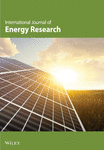A feasibility study of using thermal energy storage in a conventional air-conditioning system
Abstract
An Erratum has been published for this article in International Journal of Energy Research 2004; 28 (13): 1213.
This paper deals with the simulation of thermal energy storage (TES) system for HVAC applications. TES is considered to be one of the most preferred demand side management technologies for shifting cooling electrical demand from peak daytime hours to off peak night hours. TES is incorporated into the conventional HVAC system to store cooling capacity by chilling ethylene glycol, which is used as a storage medium. The thermodynamic performance is assessed using exergy and energy analyses. The effects of various parameters such as ambient temperature, cooling load, and mass of storage are studied on the performance of the TES. A full storage cycle, with charging, storing and discharging stages, is considered. In addition, energy and exergy analysis of the TES is carried out for system design and optimization. The temperature in the storage is found to be as low as 6.4°C after 1 day of charging without load for a mass of 250 000 kg. It is found that COP of the HVAC system increases with the decrease of storage temperature. Energy efficiency of the TES is found to be 80% for all the mass flow rate of the discharging fluid, whereas exergy efficiency varies from 14 to 0.5%. This is in fact due to the irreversibilities in a TES process destroy a significant amount of the input exergy, and the TES exergy efficiencies therefore become always lower than the corresponding energy efficiencies. Copyright © 2004 John Wiley & Sons, Ltd.




